Nature
Jeollabuk-do is a showcase of nature itself
Awe inspiring landscapes and views molded by time, The clean air of its natural splendor will heal your tired body and soul.
Jeollabuk-do is a fertile land encompassing mountains and fields, rivers, and seas. The land still fosters the gentle and generous spirit that has endured for thousands of years. It is estled among mystic mountains and rivers, home to a history that is painful yet undaunted, and it flourishes with song and food. The greenery of the Byeonsan Peninsula represents summer, and the red maples of Mt. Naejang and Mt. Daedun show off the beautiful fall foliage. Mt. Deogyu’s snowy vistas reach their zenith in winter, and Mt. Moak is resplendent when the cherry blossoms bloom in spring. Here you can hear the laughter of the local people, as the denizens of Jeollabuk-do favor giving over taking, and live affluent lives appreciating the bounty of the land.
Korean National Park No. 1 Mt. Jiri
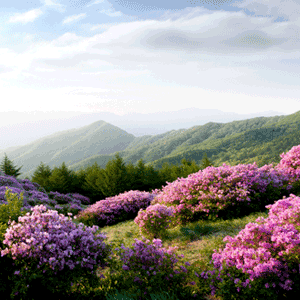
Mt. Jiri is the largest and most beautiful mountain in Korea. It was the first to be designated as a Korean National Park. Dulegil (Jiri Road), connecting the mountain’s environs, attracts many isitors as a symbol of humanity, introspection, and pilgrimage. Many cultural assets are dotted throughout the mountain region, many regarded as equals of National Treasures. These elements of heritage emain because the mountain was one of the birthplaces of Buddhist culture in Korea. Large and small festivals are held throughout the year, including the Mt. Jiri Gorosoe Yaksu Fesitval and the Baraebong Royal Azalea Festival.
Stimulating the mind, Mt. Naejang
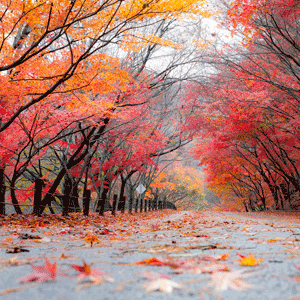
Mt. Naejang is exceptionally beautiful throughout the entire year. Autumnal tints completely paint the mountain red during fall, including Naejang Temple. The red and yellow leaves that stretch out below the cliffs at Seoraebong Peak will take your breath away. The Bija nutmeg forest blanketed in snow during the cold winter creates an elegant atmosphere perfect for the season. For this reason, the ountain is called Mt. Geumgang of Honam, and was selected as one of the eight most beautiful places in Korea. The highlight is the view of the whole mountain from Yeonjabong Peak, reached by cable car.
Beauty around every corner, Mt. Deogyu
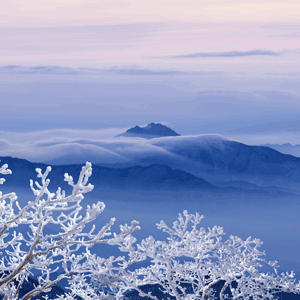
Mt. Deogyu is a mountain of affluence. It boasts 33 beautiful scenic points, including a view of its lush forests. The best sightseeing spot is Muju Gucheondong, which extends 28 km from ajetongmun to Baekryeon Temple poised halfway up the north face of Mt. Deogyu. Crystal-clear water flows down Gucheondong Valley, sparkling like sunshine reflecting off a mirror. The valley has a succession of rugged, rocky cliffs and rapids. Each sight is associated with many legends.
Filled with mystical legends, Mt. Mai
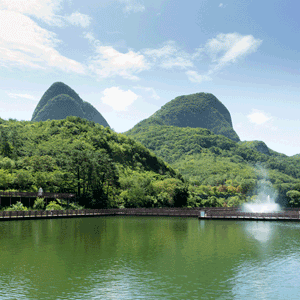
Mt. Mai, in Jinan, earned its name for its shape, resembling a horse raising its two ears. Mt. Mai features the gilt of nature where many mysterious natural phenomena can be observed that defy scientific explanation. There are some 80 stone towers built on native rock that do not collapse even in powerful storms. If you prepare a bowl of freshly drawn water and place it in either the Mt. Mai area, unsu Temple, or Cheonhwang Gate in the winter, a frozen pillar reaches up to the sky from its center. Mt. Mai is a rare ritual site in the Honam area that hosts a religious ceremony dedicated to the mountain pirit, and is home to prayers for national prosperity and welfare in the spring and autumn.
The fragile beauty of flowers Mt. Seonun
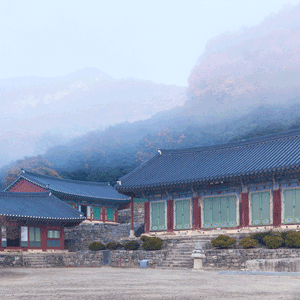
Mt. Seonun in Gochang has many visitors throughout the year. Camellia in spring, Crepe Myrtle at Daeungjun Hall in Seonun Temple in the summer, Cluster-Amaryllis in autunm, and gentle snowfall in mid-winter are sights to see. In particular, the Dongbaeknamusup Camellia Forest Road Natural Monument has been selected as the most beautiful road in Korea in the spring. The mountain is also known as ‘Mt. Dosol’. ‘Seonun’ refers to Zen mediation in the clouds, while ‘Dosol’ refers to Dosolcheongung Palace, the dwelling place of Maitreya. The mountain is considered to have a lot of holy energy. Old Seonun Temple holds many meaningful cultural assets stemming from its long history.
A safe and comforting cradle Mt. Moak
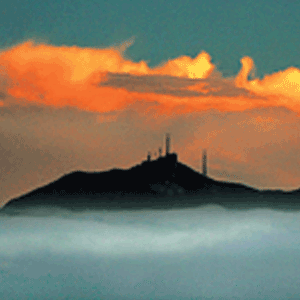
Mt. Moak can be climbed easily. Geumsan Temple, the head temple of the maitreya faith, was established here in antiquity. By the late Joseon era, Gang Jeung-san promoted his philosophy in Daewon Temple, and established the Jeungsan-gyo religion. Many other new religions were also established at Mt. Moaksan, and famous Buddhist temples such as Geunsan, Daewon, Gwisin, and Suwang can be found here.
Unique views of wondrous unusual rocky outcrops Mt. Daedun
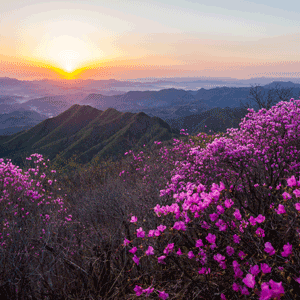
Mt. Daedun in Wanju, has many different stories about the origins of its name, it also has many stories behind many of its sites. It is where the Ugeumchi battle occurred during the Japanese incursions of Korea from 1592 to 1598 occurred. Japanese troops came to Jeonju from Geumsan were fought. It also is where the Donghak Peasant Army was fought here the Ugeumchi battle. Also it is the last fight with Japanese army in the late-Joseon era. Mt. Daedun has a splendid view, with magnificent terrain centered on its highest peak, Macheondae. It harmonizes well with dozens of large, unusually shaped rocks and outcropings, such as Wanggwanbawi rock on Maebong Peak.
Crystal-clear streams, Whispers as they flow along
The Mt. Gangcheon valley in Sunchang, and Dosol Valley at Mt. Seonun in Gochang are easy areas for walking, with very gradual slopes. There are many unusual rocks among the natural waterfalls, creating scenes from oriental paintings. Sinheung Valley in Wanju has many rare species of insects and plants, such as nettle-tree butterflies, making it the best site for ecological study. Jinan’s Uniram Baniram and Baegun Valley, Jangsu’s Jiji and Deoksan Valleys, and Jeongeup’s Geumseon and Wonjeok Valleys are favorites for many visitors seeking to escape from the summer heat.
Jirisan Valley
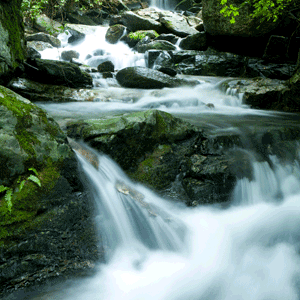
Mt. Jirisan’s deep gorges are beautiful in every corner. The cool and chilling water streaming from the Piagol, Bamsagol, and Baekmudong Valleys flows over 10km. Buril, Guryong, Chilseon, and Ganaeso Falls exhibit a pure and primal view of nature. Silbidan Falls in Bamsagol Valley in particular, was selected as a mustsee site in Korea by ‘CNN GO’, sister company of CNN and Asian culture media.
Mujugucheondong Valley
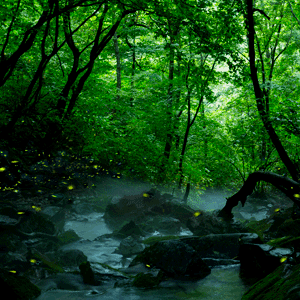
Mujugucheondong Valley has a succession of diverse and unique rock outcroppings differing in color and shape. The water that runs through its virgin forests creates many waterfalls and cascades. It has 33 beautiful sights, including Haksodae, where an old pine tree once stood where cranes nested; Cheongeumdae Cliff, where the sounds of flowing water are reminiscent of the sounds of traditional geomungo or gayageum (Korean instruments); Wolhwatan, where the view of the waterfall reflects the moonlight is simply magnificent; and Bipadam, where the fairies played the Korean bipa mandolin.
Magnificent scenery, sculpted out of the mountain and sea Byeonsan Peninsula
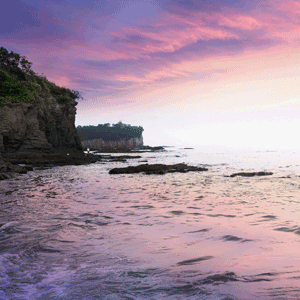
Driving through the Byeonsan Peninsula along the Yellow Sea, you will see peaceful harbors and rugged cliffs, cozy beaches and seashore rocks, fishing villages and harbors glowing in the sunset, and adjacent mountaintops magically appearing and disappearing. The magnificent views will take your breath away as they appear around the curves of the road. Byeonsan Peninsula is the only national park with a vast ocean as well as dense forests, deep gorges, and fertile plains. The peninsula is separated by Mt. Waebyeon adjacent to the Yellow Sea, and Mt. Naebyeon in the interior. Mt. Waebyeon extends to Gosapo Songnim Beach and Jeokbyeok River and has a coastal road connecting Mohang and Gomso. This beautiful mountain was hailed as the ‘road desired to walk the most’ by writers.
Islands of azure mysteries and magnificent scenery, Gogunsan Islands and Wido Island
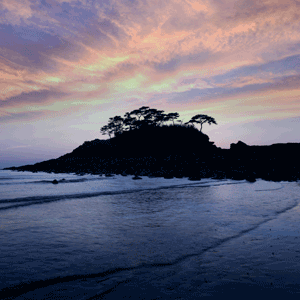
Climbing Mt. Daegak of Sinsi Island connected to the Saemangeum Embankment, leads to a panoramic view of the Gogunsan Islands, including Seonyu and Munyeo. The Gogunsan Islands are scattered like stars, with 16 inhabited and 47 uninhabited islands. Islands on the open sea are clustered together like siblings. Visitors seeking something special visit Buan’s Ha Island, which joins the land just twice a month, at the beginning, when the seawater ebbs away, revealing vast mudflats, and again fifteen days later. Visitors also enjoy visiting Wido Island, thought to be the basis for ‘Yul-do’ in the “Tale of Hong Gil-Dong.”
Small streams gather and form one large river, Flowing for a thousand years
Jeonbuk rivers flow eloquently, steeped in history and culture
When you walk along the rivers of Jeolla, you can hear them breathe, slowly and gracefully, or wild through roiling rapids. The river’s elegance reflects the style of Jeollabuk-do, and it’s clear water mirrors the mountain scenery of Honam. Rivers create stories wherever they flow. The Geum, Mangyeong, Dongjin, and Seomjin Rivers record the history of the land, and plays witness to the lives of the people of Jeollabuk-do’s and their doings.

The Seomjin River starts from Demisaem Spring in Baekun-myeon, Jinan. It embraces the long road connecting Jeolla-do and Gyeongsang-do, and coils around a little village smaller than an open field. It flows nearer to habitation than other Jeonbuk rivers do, and bears many memories and beautiful, wistful stories. The Geum River flows through the old lands of Baekje. From ancient times, the river was a lifeline for the Honam plains, and also was a cultural center during the Baekjae era. It also acted as a route for the flow of culture to Japan.
The Dongjin River calmly embraces many holy religious sites of Korea. The Dongjin River formed the birthplace for Donghak, Cheondo-gyo, Jeungsan-gyo, and more. There are also sacred remains of early Christians in the mountain and Confucian and shamanistic practices continue here, even to the present day. The Mangyeong River is rich with life. Cherry blossoms come into full bloom, and the marshy region comes alive, bursting with vibrant life during the spring. During the summer and autumn, the river flows through the verdant foliage and golden fields. In the winter, migratory birds glide lazily over the river, while silver grass slowly sways.
UNESCO Biosphere Reserve Gochang

Find mudskippers, gal crabs and calling crabs dancing across the mudflats, hear a reed warbler singing in the coastal breeze, and Saunders’s Gulls and oyster catchers resting while bobbing for food. Life here is rich and resplendent. Including Gomso Bay in Gochang and Buan, the Seonam Beach mudflats are valued for their unique and distinctive value, situated between island and rocky mountain. It was selected as a UNESCO 2013 Biosphere Preserve, with the entire area recognized as an ecosystem worthy of protection. The Gochang Biosphere Reserve is 671.52 sq km in area. It is the first in Korea with entire administrative district so designated.
The Dolmen site is a special cultural feature encompassing prehistoric remains, and was registered as UNESCO World Heritage Site in 2000. With this designation, it was recognized as a valuable artifact of prehistoric culture of Korea and the world. The dolmen sites in Jungnim-ri, Gochangeup and in Sanggap-ri, Asan-myeon represent the largest collections of dolmens in East Asia, with their construction dating to circa 400 to 500 B.C., making them true megalithic museums. From spring to autumn, a range of experience programs are available, where you can observe, touch, and come to understand the mudflats, immerse yourself in Hajeon Fishing and Tideland Village, and enjoy Mandol Wetlands Park in Simwon-myeon. Dongnim Reservoir offers the spectacular view of spectacled teals ancing in a gigantic flock, covering the sky. Over 300,000 birds dwell at the reservoir. A 2004 international survey selected this location as the best kingdom of migrant birds in the world. CNN also promoted the spot.
UNESCO Global Geopark, Jeonbuk State West Coast Geoheritage
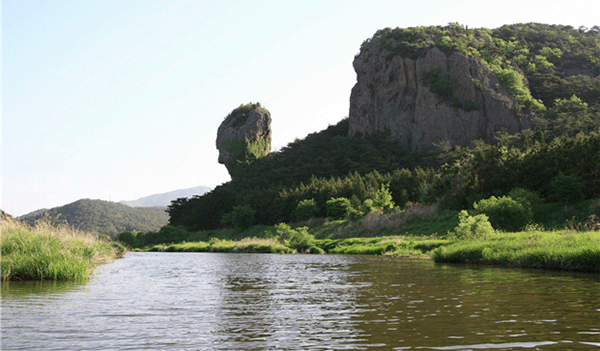
Jeonbuk State West Coast Geopark is located in Buyeo-gun and Gochang-gun, where the vast West Sea and the endless tidal flats breathtakingly spread. The geopark is an optimal natural learning ground for observing the geological development process as of various rocks and sediments from the Paleozoic to the Quaternary are scattered here and there. The most noteworthy geological value to observe are the Cretaceous volcanic rocks.
The majority of the geological sites are dominated by Cretaceous volcanic rocks, which contain a wealth of information about Cretaceous volcanic activity in South Korea, as well as the various volcanic eruptions and associated depositional processes that occurred before and after it.
Volcanic landforms in circular and elliptical shapes, which preserve their geological and scientific value due to their well-preserved morphology among the Cretaceous to Cenozoic volcanic rocks in South Korea, were designated as the 10th National Geopark in September 2017. They have since been recognized as a UNESCO Global Geopark in 2023. This marks the fifth UNESCO Global Geopark in South Korea and the first "Coastal" global geopark.
* Jeju (volcano), Cheongsong (mountain), Mudeungsan Mountain (mountain), Hantangang River (river)
Homepage